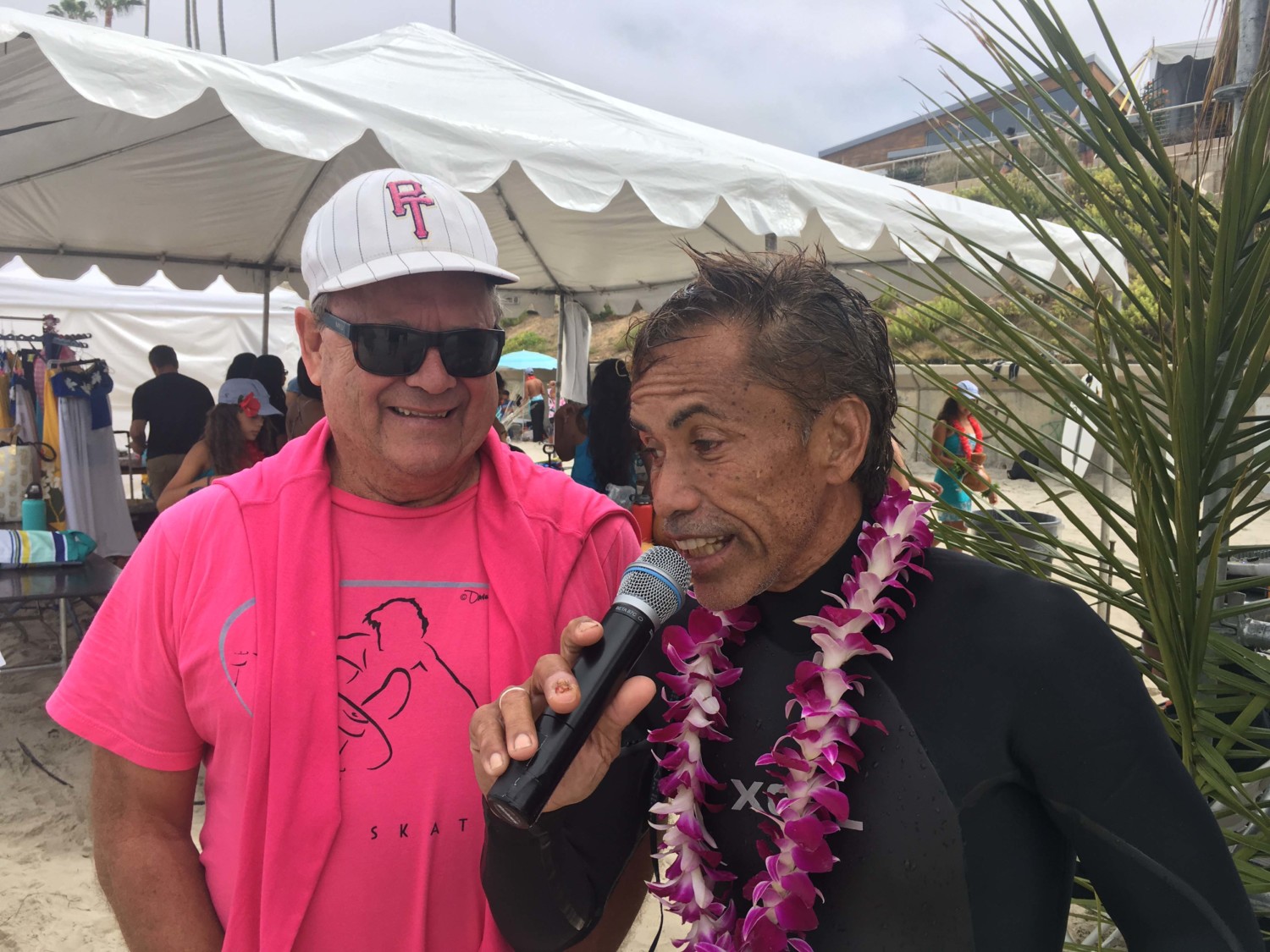Every August for the past 24 years I have had the privilege of being the emcee for the UCSD/Moore’s Cancer Center Luau & Longboard Invitational. While the La Jolla event has proven a worthwhile cause it also serves as a sort of class reunion where I meet with old friends, some of whom happen to be major surfing legends.
While not my best friends, two such legends I encounter there often are Australian-born Peter “PT” Townend and Hawaii-born, Reno Abillera.
They have both been at or near the top of the pro surfing world, and surfed some heavy days together. Nothing, however, has ever topped that Thanksgiving Day in 1974 when Waimea Bay was breaking near capacity.
The event was known as the Smirnoff Pro and the odds-on favorite Jeff Hackman had been carving his way through to the finals along with PT and Reno. I recall reading the accounts of that day in Surfer Magazine, but now I could hear the rest of the story from two of the main players themselves.
I was doing my regular polite beach interviews when I barged in on Reno and Peter as they spoke about that day when Thanksgiving served up an all-you-can-eat buffet for anyone who dared taste it. According to Townend, “I was sitting out the back when the biggest wave I had ever faced approached and Ricky Grigg told me to go. I took one look and said, ‘You’re crazy,’ but he continued to encourage me to paddle into it. Against better judgment I did and it turned out to be the biggest wave I have ever ridden in my life.”
But this was Reno’s day, and he found himself continuously in the spot, turning hard and riding deep on some of the biggest set waves of the day. In the end the results were Abillera (1st), Hackman (2nd) and Townend (3rd). Now, 43 years later, Reno was speaking about the size and power of the surf and the rush of winning an event at home, at a time when Australians were taking out most of the major events.
Surfers tend to push and shove and jockey for position while in the lineup. This time, however, the surf was so treacherous that nobody hassled anyone for waves. PT recalls, “When the sets came in, we would look at each other and say, ‘Do you want this one?’”
By Hawaiian standards, which measures waves from the back rather than the face, these waves often exceeded 20 feet, and each one held, according to surf film legend Bruce Brown “enough energy to light the city of Honolulu for a week.” With no such technology in place the waves lit up the surfers themselves who were all smiles as they stood, drying on shore after having survived the worst the Pacific could throw at them. These were the early days of pro surfing and Reno received $1,000 for putting his life on the line.
After the best interview of the day, I allowed those two longtime friends and competitors to reminisce about their years of riding waves. As I moved down the beach I could still hear them talking and laughing.
Next, I interfered with power broker Taylor Knox and “The Endless Summer 2” co-star Pat O’Connell. They too had some stories worth telling, but I’m out of space and must save their comments for another time.

